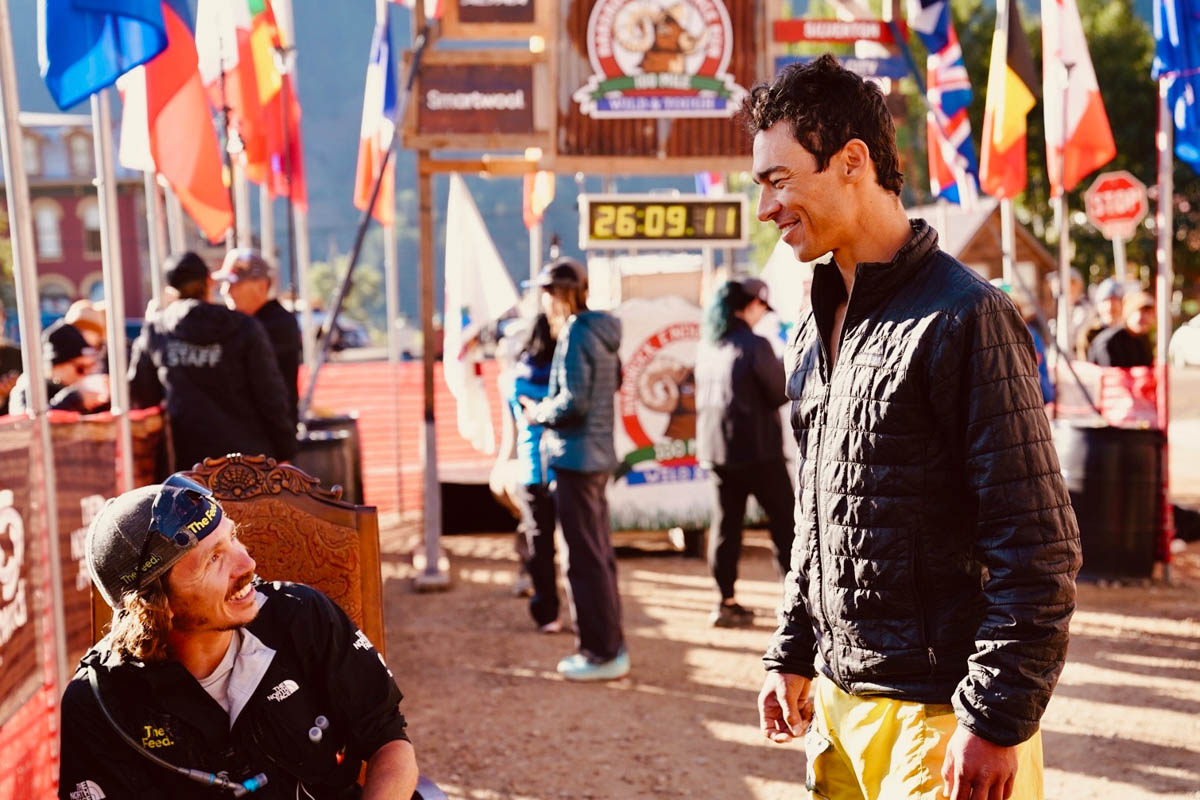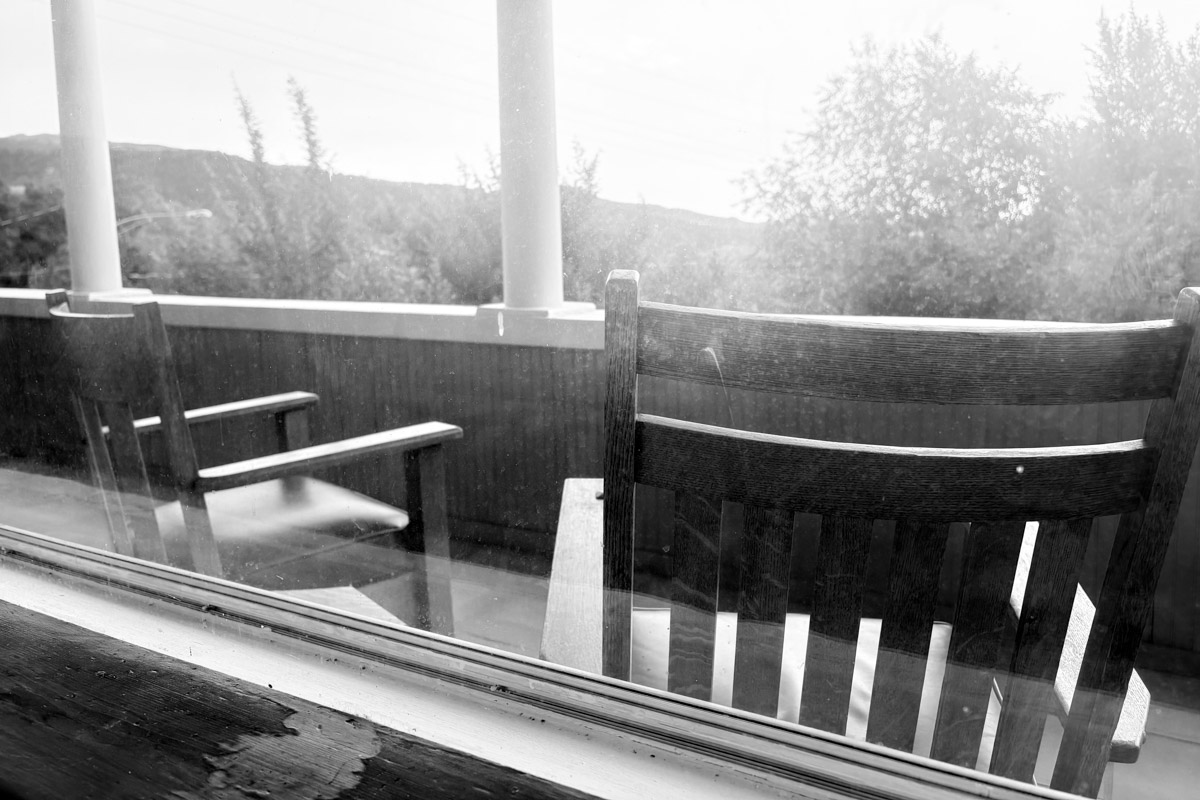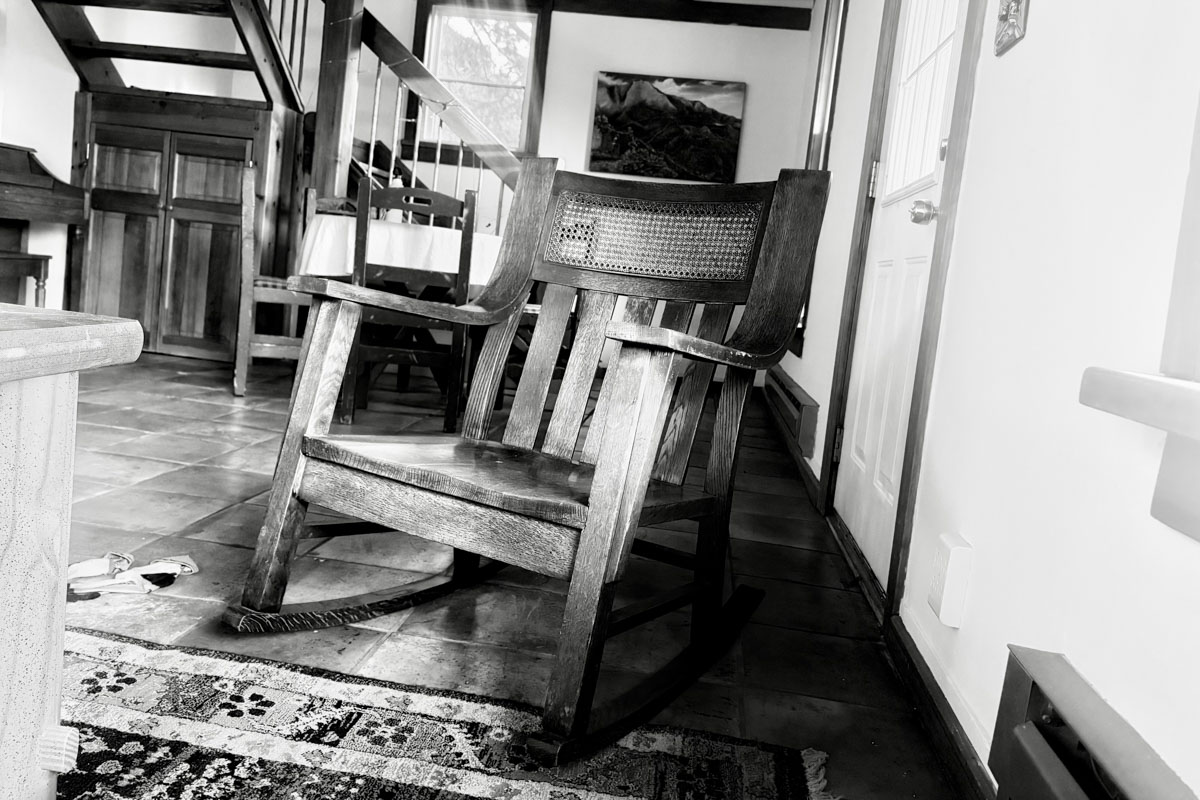Tucked away on the edge of Manitou Springs, Colorado, at the foot of Red Mountain, there is a modest yellow house. It’s funny that it’s yellow, because when you look at it, it’s clearly green. But the green is paired with yellow trim, and for some reason, that’s what my brain latches onto. Hence, it’s a yellow house, or at least that’s what I’ve told the neighbors.
This little yellow house, painted green and tucked beneath Red Mountain, is where I’ve been training as of late. When I first arrived, it was void of any furniture. Well, furniture and pretty much everything else, save for the major appliances and a single roll of toilet paper: the first I’d owned in roughly four years (the toilet paper, not the appliances). Even after a few months, it had little more than a bed, a table, and a few chairs. I guess I was too distracted with training to collect much else.
Rocking Chairs
But, bit by bit, things were acquired. Yard tools, composting bins, a bike cart, and even a piano joined the collection. But most important were the rocking chairs. The little yellow house, painted green, has a glorious front porch. It’s the sort that simply begs for a rocker. And so we found one. One became two, and two turned into three. As I collected and sat in these rockers, I realized something. When it comes to a rocker, it’s all — or largely — about the quality of the rock, and they aren’t all the same.
The first one we got had a shallow, clunky rock. The second moved with a smooth, balanced, effortless roll. That sucker was a home run. And the third? Well, it was somewhere in between — not as buttery as the second, but not as clunky as the first.
I left the second and third on the porch and moved the first inside. Then one night, I sat in the living room staring at the clunker, thinking about how I had judged it for its rock. Yet there was more to this rocker than the way it moved.
It had other things to offer. It was strong and solid, with beautiful curved arms. Its wooden structure displayed a lovely grain and classic style. Staring at the rocker, my thoughts drifted to the unknown. What more was there to this chair? Who made it and how? Did they steam those beautiful, curved arms? Did they naïvely put too shallow an arc on the runners? Was it the first one they had ever made? Did they make a second, third, or fourth that rocked deeper and smoother?
There was so much I didn’t know. There were so many good attributes of this rocker, and yet I denigrated it based on its ability to do just one thing. It made sense because it is, after all, a rocker, and yet, there is more to it than that.
Not Just Rocking Chairs
I tell this story not so much to talk about rocking chairs as to talk about this habit of judgment. So many times in life, we judge before we make an effort to understand. It happens a lot.
Take running, for example. A runner is a bit like a furniture maker. Each race is a chair, and they hone their craft with every piece they build. Sometimes, they hit a home run. Other times, they end up with a clunker. The judgments come quickly, even from themselves. You finish a race and think, I messed that one up. That wasn’t my best work. This is how I felt after the 2025 Hardrock 100 last month.
Others witness your performance and do the same: they judge it. Some positively, others negatively. Unfortunately, the judgment often comes first, and the effort to understand lags or never follows at all. The result on race day is a mere rock of the chair. Sure, it means something. Results do hold value, but they aren’t everything. They aren’t the whole story.
It’s a real shame when this happens because the real value lies in the story as a whole, not just the closing chapter. What is the glory without the failures beforehand, the struggles throughout, and the obstacles cleared? Sure, race day is judgment day, and it matters, but an athlete’s worth can’t be summed up by a single result. Life is deeper than that.
Resisting Judgment
When I spectate a race or look up the results afterward, I get such a small piece of the story. I can judge the performance immediately, saying, “Oh, they nailed that one,” or “They blew it again. They are just so talented. They aren’t very consistent. They’re off their game. They can’t run with the big dogs. They can’t handle the pressure.” But all of these judgments are often based on such little information.

When the race is done, there’s a lot more to consider than the final result. Zach Miller (left) and David Ayala speak at the 2025 Hardrock 100 finish. Photo: Peter Maksimow
If I really wanted to learn something, I would ask why and try to understand. But so often, we don’t do this. We judge without making an effort to understand. We do this in sports and life, and it kills us.
Why do we do this? Perhaps because it’s easier, and maybe because we think we already know the answers. But failing to ask questions is a dangerous place to be. It’s throwing away a beautiful rocker because it rocks funny, failing to admire its beauty and to see the potential that it holds. It’s seeing an athlete only for their results and not their whole self.
As we navigate both racing and life, may we learn to be more curious than judgmental. May we ask why before we assume. And may we sit in that rocker, smooth or rough, and give it enough love and grace to enjoy the ride.
Just a few thoughts from the front porch of a yellow house painted green.
Call for Comments
- Do you find yourself judging others’ race results before trying to learn the whole story?
- Do you have other areas in your life where you find that you’re quick to judge?



